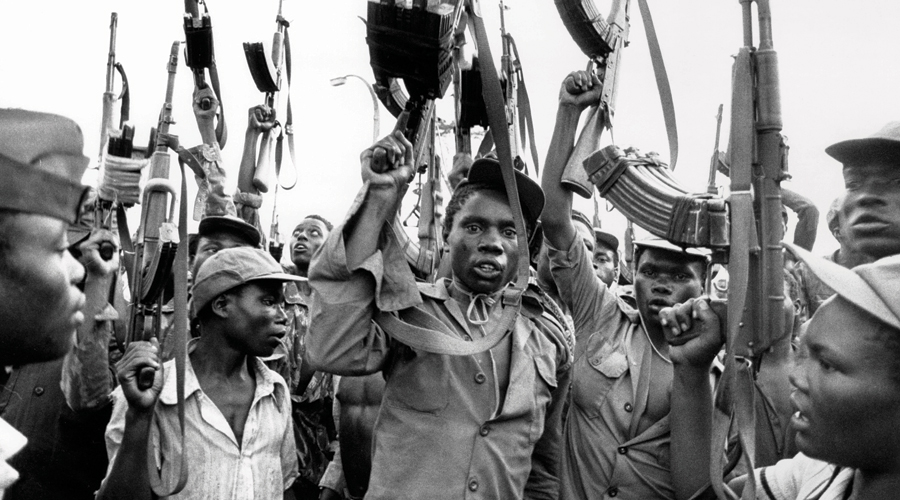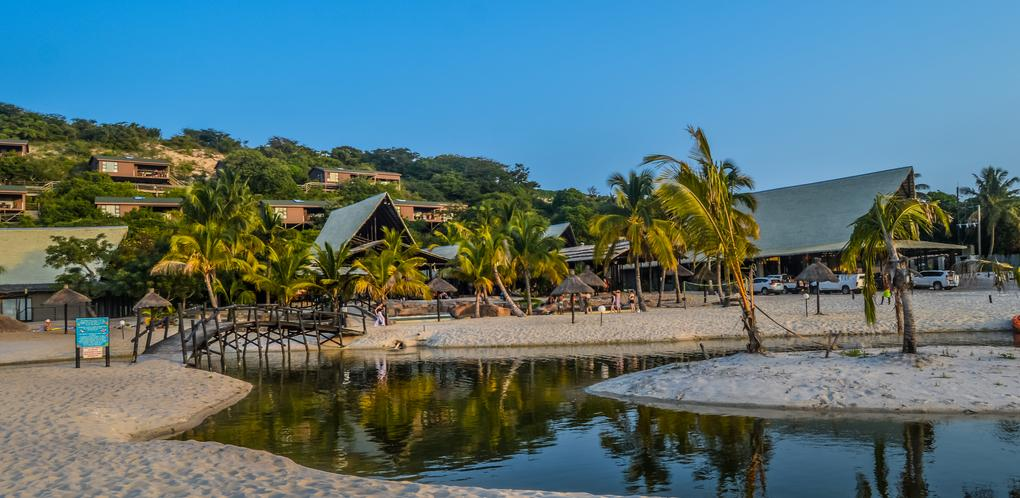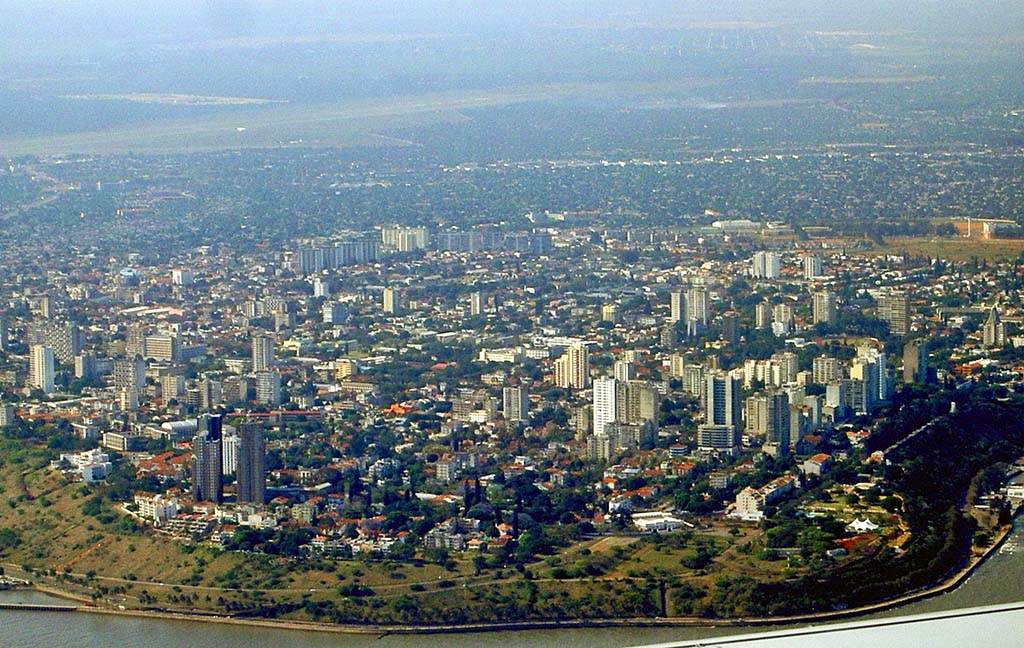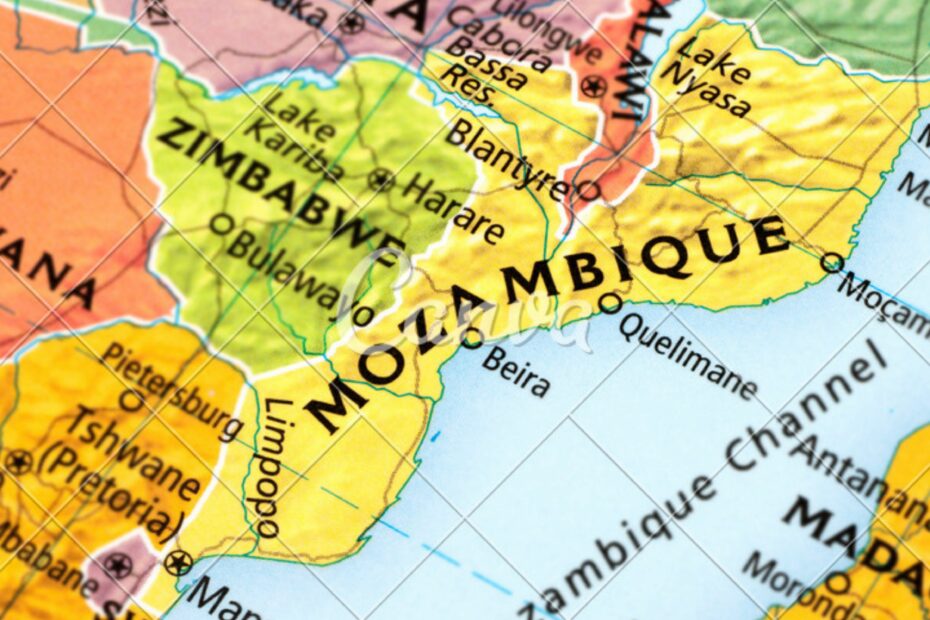Located in southeastern Africa, Mozambique is a host of enchanting landscapes, a rich historical narrative, and a vibrant cultural mosaic. From its diverse geography, featuring pristine beaches to mountain ranges, to the echoes of a struggle for independence that resonate in its history, Mozambique captivates the curious traveler. Let us delve into the key facts that define Mozambique, uncover its cultural richness, showcase its delectable cuisine, and explore the economy of a nation that is emerging as an enticing destination for tourists.
Key Facts
- Location: Mozambique is located in southeastern Africa, bordered by six countries: Tanzania to the north, Malawi and Zambia to the northwest, Zimbabwe to the west, and South Africa and Eswatini to the southwest.
- Capital City: The capital and largest city of Mozambique is Maputo, previously known as Lourenço Marques.
- Language: The official language of Mozambique is Portuguese.
- Independence: Mozambique gained independence from Portugal on June 25, 1975, after over four centuries of colonial rule.
Geography and Climate of Mozambique
Mozambique’s geography is incredibly diverse, featuring a rich combination of coastal lowlands, high plateaus, and mountain ranges. The eastern coastline of the country stretches over 1500 miles along the Indian Ocean, adorned with beautiful beaches and vast stretches of coral reefs. Highlands and plateaus characterize Western Mozambique, with notable features such as the Gorongosa mountain range and the Zambezi river valley. The terrain ranges from pristine beaches to thick forests and bushy savannas.
In terms of climate, Mozambique experiences a tropical climate, with two distinct seasons: the wet season, occurring from November to April, and the dry season, from May to October. The coastal regions generally maintain a warm, humid temperature, while the inland highlands experience cooler temperatures. Due to its tropical location, the country is susceptible to cyclones and flooding during the wet season. Read Also: Exploring the African Diversity: A Glimpse into Each Nation

A Glimpse into Mozambique’s History
Mozambique is a land that encapsulates years of rich history, dating back to the days of the Swahili merchants and the later establishment of a trading post by the Portuguese. The infamous slave trade and the struggle for independence contribute to the complex roots of the country’s past. The earliest inhabitants of the region were the San hunter-gatherers and Bantu-speaking farmers. In the 11th century, Arab and Persian traders established trading posts along the coast, leading to the spread of Islam and the establishment of several Sultanates.
The Portuguese arrived in the early 16th century, marking the beginning of over four centuries of colonial rule. During this period, the Portuguese primarily utilized Mozambique as a source of valuable resources, such as gold, ivory, and slaves, which they exported to other parts of the Portuguese empire. Forced labor, economic exploitation, and suppression of local cultures marked the colonial period.
The struggle for independence began in the 1960s, led by the Mozambique Liberation Front (FRELIMO). Following a decade-long armed conflict, Mozambique finally achieved independence on June 25, 1975. Post-independence, Mozambique faced a series of challenges, including a protracted civil war, economic instability, and political strife.
Mozambique has made significant strides towards peace and stability, although it continues to grapple with poverty, corruption, and intermittent political tensions. Its vibrant history, cultural diversity, and natural beauty make it a unique destination, offering insights into a country that has weathered many storms and continues to evolve.

Culture and Traditions
Mozambique’s culture is a blend of indigenous practices, Portuguese influences, and elements from the wider African continent. The country’s artistic traditions are rich and varied, with traditional art forms such as carving, pottery, weaving, and dance playing an integral role in societal life. The indigenous Makua are known for their dance and drumming, while the Maconde are famous for their carvings, typically made from wood or ivory and intricately depicting scenes from daily life or local mythology.
Mozambican culture deeply ingrains music and dance, employing them not only for entertainment but also as means of storytelling and for marking significant life events. Local music incorporates a wide array of indigenous and foreign instruments, with genres like Marrabenta and Timbila commanding a large following. Read Also: 9 African countries you can visit on a tight budget
While Portuguese serves as the official language, Mozambique’s ethnic diversity is evident in the use of over 40 different languages and dialects spoken across the country. Local customs and traditions vary considerably across ethnic groups, yet a shared sense of community, hospitality, and respect for elders are universal values that permeate Mozambican society.
Religion in Mozambique is predominantly Christian with a significant Muslim minority. Mozambicans, known for their religious tolerance, often combine Christian or Muslim practices with traditional beliefs and rituals.
Festivals form an integral part of Mozambican culture, with the most notable being the Maputo City Festival, celebrating the city’s founding, and the Chopi Music Festival showcasing local music and dance. These vibrant celebrations offer a glimpse into the heart of Mozambique’s cultural heritage, filled with color, rhythm, and communal spirit.

A Taste of Mozambique Food and Cuisine
Mozambican cuisine is a combination of local ingredients, Indian and Arabic influences along with Portuguese flavors, a legacy from its colonial past. At the heart of the cuisine is seafood, owing to the country’s extensive coastline. Prawns marinated in piri-piri sauce, a spicy concoction made from African bird’s eye chili, lemon, and garlic, is a national favorite. The local seafood is abundant and varied, with dishes featuring fish, crab, calamari, and lobster commonly found on menus.
Rice, cassava, and maize are staple carbohydrates, often served alongside rich, flavorful stews. People frequently prepare chicken in a variety of ways, with ‘Galinha à Zambeziana’ or ‘Chicken Zambeziana’ being a beloved dish. This dish consists of chicken marinated in a sauce of lime, pepper, garlic, and coconut milk, then slow-cooked until tender.
Vegetables such as okra, spinach, and cashew nuts (which are grown widely in the country) are essential to the Mozambican diet, often incorporated into soups or used as accompaniments to the main course.
Mozambique is also known for its cashew nuts, often enjoyed as a snack or used in cooking. ‘Poatapa’ is another popular dish made from maize leaves, cashew nuts, and pumpkin, and served with rice.
Mozambican cuisine bears a significant influence from its Portuguese colonial history. Commonly found desserts include pastéis de nata (egg custard tarts) and pudim (caramel pudding), alongside local sweet treats like ‘alétria,’ a sweet pasta dessert.
As for drinks, locals often enjoy ‘Tipo Tinto,’ a local rum, paired with a raspberry cola known as ‘Sparletta Sparberry,’ creating a combination referred to as an ‘R&R.’ Tea and cashew fruit juice are also popular choices. Overall, Mozambican cuisine tells the story of its history and people, a blend of diverse influences and fresh local ingredients that tantalize the taste buds.

Tourism in Mozambique
Mozambique is an emerging tourist destination, offering a myriad of experiences, from sun-kissed beaches to wildlife-filled national parks. The country’s long coastline is dotted with pristine beaches and turquoise waters, making it a haven for water sports enthusiasts. Scuba diving and snorkeling are popular activities, with the Bazaruto Archipelago and Quirimbas Archipelago offering a diverse array of marine life and coral reefs.
Inland, Mozambique boasts of several national parks and game reserves like Gorongosa National Park and Niassa Reserve, home to a wide variety of flora and fauna. Bird watchers will be delighted by the exotic species found in these areas.
The country’s rich history is reflected in its architecture, particularly in the capital city of Maputo. Here, the Portuguese colonial architecture juxtaposes with modern buildings, creating a unique aesthetic. Notable landmarks include the Maputo Railway Station and the Casa do Ferro.
Mozambique’s cultural heritage is another draw for tourists. The vibrant festivals, traditional music and dance, and local cuisine provide a glimpse into the country’s rich culture and traditions. Despite the challenges it faces, Mozambique continues to grow as a tourist destination, offering a unique blend of natural beauty, cultural richness, and warm hospitality.

Economic Landscape of Mozambique
Mozambique’s economy is characterized by a mix of agriculture, industry, and services. Agriculture, dominated by small-scale subsistence farming, plays a critical role, employing a significant proportion of the population and contributing a substantial portion to the country’s GDP. Key agricultural products include sugarcane, cassava, corn, cashews, and cotton. Furthermore, Mozambique’s extensive coastline offers a thriving seafood industry, with prawns being a significant export.
The discovery of significant natural gas reserves has shaped the industrial sector, attracting international investments and promising to boost Mozambique’s economic growth in the long term. Other significant industries include aluminum production, food processing, and textiles.
The service sector, particularly tourism, is rapidly expanding, fueled by the country’s rich cultural heritage, wildlife, and stunning beaches. However, despite these promising sectors, Mozambique faces economic challenges, including infrastructure constraints, corruption, and high rates of poverty. The country is making efforts to address these issues, promoting sustainable growth and economic diversification. Furthermore, foreign aid and investment continue to play a significant role in Mozambique’s economic development strategy.



